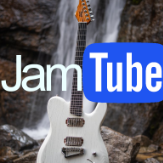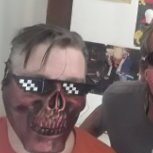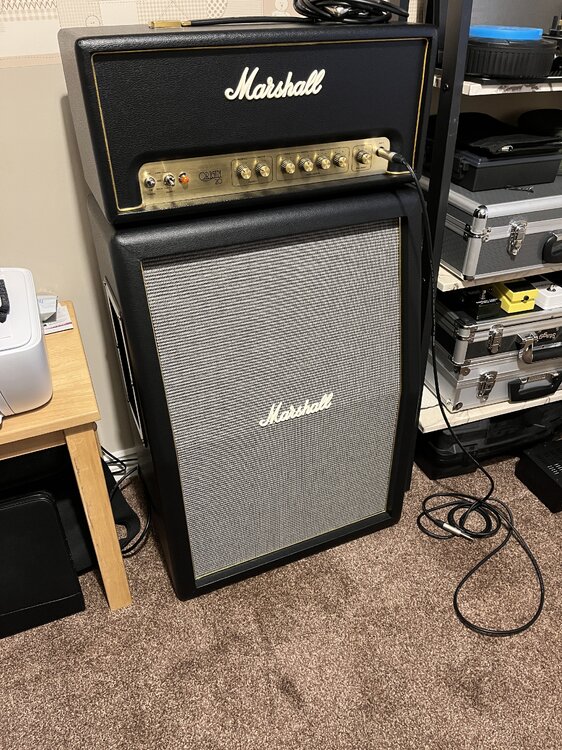All Activity
- Earlier
-
jallan99 joined the community
-
Bill didn't play bass on quite a few classic tracks. Sympathy for the Devil, Street Fighting Man, Jumping Jack Flash were all Keith's lines, Mick Taylor played bass on Tumbling Dice and Ronnie did a couple, too. Think Charlie was missing in action on a few drum tracks as well. I suppose Bill wasn't that bothered; the Jagger/Richards axis of power was well established by the time of Emotional Rescue so if they wanted Ronnie to have a go at it then that's what would happen, no arguments.
-
I wonder how much Fender's digital modelling versions of their valve amps will catch on. Those were quite tempting but more expensive and I'm also not sure about the repair situation. On the amateur jazz scene all I'd need would be a simple amp (ideally 12" speaker(s)) with volume, tone and reverb controls. There's no need for effects and I'm very unlikely to encounter a PA in the rural pubs where I get to play.
-
Not me, I've played right handed from day one. Mainly because my drum teacher made me play the skins right handed two years before I took up bass. I've never really learned to play left handed and there's not a lot of motivation to learn given Mark King is left handed too. I can play drums ambidextrously more or less, but need the kit set up Phil Collins style.
-
It's definitely a really cool idea, like a viable alternative to tubes that's still notionally tubes, given the nature of the guitar amp market. There was a time I thought we might have to see the end of tube production for things to move on (or them become unavailable in the West - given they're all made in China and Russia now, not unthinkable, though frankly if / when *that * war happens, I doubt we'll be worrying about something as minor as amps. Assuming we survive it). I suppose the big question with amp developments now is to what extent alternative to amps begin to replace them altogether. I expect we'll always see people who want to use an amp (rather than DI trickery) in the studio, but on stage where a pedal board replacement (subject to a venue having decent monitoring and the rest) has obvious practical benefits.... I'm imagining a lot of working musos would love to do a tour where the whole band's gear, including the drumkit, could fit in a Volvo estate. Maybe for the big acts what we'll see is them still having the walls of cabs for show, but pedals replacing the '15watt combo they're actually playing through' into the PA... I suppose what I'm rambling at is which of the competing techs we now see will be the mp3 player, and which will turn out to be the Minidisc (lovely idea, but got overtaken before it could really establish itself).
-
rhokuza joined the community
-
I'm afraid not, this is one that's definitely staying, It's the only semi acoustic i own and my son has now taken up guitar and has his eye on it as well. I have a bad habit of not selling guitars, I think over the nearly 30 years i've been playing i've only sold maybe 3 or 4 guitars, and many have been to friends on the understanding that if they ever want to sell i have first refusal. I have a bit of a hoarding problem when it comes to guitars. Matt
-
Gloucestre joined the community
-
Robing joined the community
-
Gar8 started following Tanglewood guitar
-
Would you ever consider selling it?
-
thepowerofneil joined the community
-
yup, it's not going anywhere soon! Matt
-
Zostevaner joined the community
-
I can play a bit like that - all lefties can of course, because the obvious - but it's not something I've ever seriously tried to develop.
-
A good point indeed; there is certainly a risk. Since then I have used it at some jams and it had plenty of volume on the clean channel even with the attenuator on 1/2 power.
-
What makes me wary is it's still only Vox doing them. I'm a bit wary of being too dependent on anything proprietary, because if the company changes direction or folds, then you're stuck for spares... On the topic of bringing stuff back ,though, I wish Vox would bring back the T series solid state bass amps they did back about twenty plus years ago. I bought a well-used T25 for a song on eBay around 2004, and it's been all the home bass amp I've ever needed. They did them up to a 60 (Al Gare used a T60 live and in the studio with Palookaville and the original Imelda May Band, and it was superb). Cracking warm bass sound that defied the tube nerds with its warmth. No idea how it would cope with effects tbh - I don't use them with bass - but lovely stuff. I'd like to try one of the newer Vox bass amps with the plastic(?) shell. Demos all sound great and they look to be very practical for carting around, even if they've lost something in the cosmetic department. Again, something like that housed in a big, square tweed box would be my ideal for the looks...
-
Gar8 joined the community
-
Do you still have this Tanglewood Guitar?
-
Gorgeous Springfield joined the community
-
Mickey 50 joined the community
-
Miles_Lifter joined the community
-
-
I had a 3 way one of those in my Tele. They are horrible, not only in working out the connections, but in general operation. I just replaced it with a decent, open design switch. If your friend is unwilling to spend a few quid on a decent selector, try some Google images for what wire goes where. Sorry, best I can do.
- 1 reply
-
- 1
-

-
Hello chaps. A friend has asked me to fit some pickups on his cheapo strat. He had a pop first, but let’s just say it didn’t go very well. He’s under the illusion that I will fare better. The guitar is fitted with a cheap looking 5 way switch, the likes of which I cannot locate a wiring diagram for. Does anyone recognise it? Or have a wiring diagram for it? Or even a method for determining what wire goes where with a multimeter? Thank you in advance!
-
Long shot, but does anyone else here play upside down? No, not by physically being upside down, that would be madness, I mean a right-handed instrument flipped over because you're left-handed? Like most leftys, I first toyed with rightys belonging to friends but, instead of doing the probably sensible thing and getting a left-handed guitar, I just continued playing with the thickest E string nearer my toes and always have done. I have a few left-handed guitars now but I have to restring them which involves a lot of mucking about with the bridge for intonation purposes and changing the nut around, but it does give me ease of access to the highest frets as I don't have cutaway issues that I have with rightys. I don't think playing this way has caused me too many problems; I've mainly been a barre chord/power chord thrasher who has managed to get along with playing quite straightforward minor pentatonic solos and the like, though there are a couple of techniques that I've struggled with. I don't know if that's down to being an upside downer or just my general clumsiness
-
-
Good evening, @Gcsltmc, and ... ... Plenty to read and amuse you here, and lots to learn and share. I can't help with your request (I'm in France...), but others will be along, so... Watch this space.
-
Gcsltmc started following Guitar teachers
-
Anyone know any guitar teachers in the Bethnal Green area of east London and how much I should expect to pay for an hours lesson?
-
Diary Of An Axeman started following Stomp or Tonex
-
The marketing strategy / campaigns, the artificial status that is perpetrated on all media. Seems to manipulate people in excess and impulsiveness. "If you don't have the latest, something is wrong with you", mentality, like a fashion trend. 13 years ago, Eleven Rack units were the rage and going for a high price, now you can get them all day long for under $ 200.00 U.S. Dollars , all day long. As my Father used to say, " Headline News today, under the bird cage tomorrow ".
-
JamTube started following Emotional Ballad Guitar Backing Track in B Major | 69 BPM |
-

Terminology, formulas and more formulas
Dad3353 replied to cyman1964ukg's topic in Theory and Technique
Good evening, @cyman1964ukg, and ... ... Plenty to read and amuse you here, and lots to learn and share. Simon... It's actually a lot more simple than you're making it, and you're very nearly 'there' with your current reflections in chord construction. The only issue is that you're looking for a 'mathematical' 'logic' that just is not there (and doesn't need to be...). Your starting point of creating with 'triads' (alternate notes of the scale...) works well for Major and Minor chords, and only needs extending a touch by adding the next 'alternate' note to the triad to get the Major 7th and Minor 7th chords. It's easy to visualise on a piano keyboard, adding the 'B' to the 'C' chord (the one below the octave 'C'...) creates the CMaj7 chord. This is consistant when doing the same to the 'DMin' chord (add the next alternate note, ie: the octave 'C'...) and you're crated the DMin7 chord. Continue for each diatonic note of the 'C Major' scale, using alternate notes from the scale, and you've got most of the chords needed for many, many songs. If we 'break' this chord system, and use a flattened '7th' (ie: 'Bb' instead of 'B'...) we get a chord which, when played, has a sonic tendency to want to 'resolve' to the CMajor, which is why it takes the name 'Dominant'. That Bb is not in the C major scale, but as it's a very powerful sounding chord, it has it's place in so many songs, from cowboy campfire songs to much early Bob Dylan stuff. It's a staple in the chord Pantheon. However, the chord naming of 'C7' tricks us into assuming that it's got a '7th' in it. It has not; it's a flattened 7th..! It's only through historical usage that the chords have these names, not 'logic', so get used to it..! As for extending further these chords, we are simply adding another alternate note from the diatonic scale, so, for the 'C' scale, adding a 'D' above the octave gives us a 9th', adding an 'F' is an 11th, then adding the 'A' is a 13th. No point adding further, as we'd only be repeating the notes we started with, but two octaves up. With these 'extended' chords, many other nots would be left out (usually the 5th and 7th...), as too many notes spoil the broth become muddy. I wouldn't worry about 'modes' for a while; they are not really 'mainstream', so get the basics down 'pat' before following down that rabbit hole. Interesting as it is, there's much more practical stuff to assimilate without delving further into It. Hope this helps. Douglas -
cyman1964ukg started following Terminology, formulas and more formulas
-
Hi there, This is my first post here, so please be gentle with me. OK, so I have been playing on and off for decades (40 years), but I would say I am pretty much still a beginner, at best an intermediate player. I was originally self-taught and only got to sonngs involving strumming chords, although I longed to be able to improvise like some of my friends could. So, in these early days (my teens), I knew chords such as A, C, D, E, F, G, Am, Bm, Dm, Em, A7, B7, D7, E7, G7. Whilst I understood the happy/sad difference between major and minor chords, I had no idea that there was a specific, consistent 'rule' (i.e. in this case 'flatten the third') connecting the major and minor chords. I didn't even realise that these chords were made up of 3 notes! It was a total parrot-fashion learning experience for me. I knew then that the chord 'Cmaj' was often abbreviated to just C. Now, zoom forward to today, and I know that major triad chords are actually created using notes 1-3-5 of the major scale and notes 1-3-5 of the minor scale are used for the minor scale (moreover, that this is equivalent of the 1-b3-5 notes of the major scale). However, the terminology used in the naming of these chords now has me utterly confused. Where Cmaj is the same as C, Cmaj7 is not the same as C7. Instead, the seventh chord with no major or minor indicated (e,g, C7) is called the dominant 7th. So, instead, there are these relationships: Cmaj : 1 - 3 - 5 (also known simply as C) Cm: 1 - b3 - 5 Cmaj7: 1 - 3 - 5 - 7 C7: 1 - 3 - 5 - b7 (also known as C dominant 7th) Cm7: 1 - b3 - 5 - b7 And this is just the first few chords!!! I suppose if we never refer to the chord C as just 'C', but always call it 'Cmaj', we could write these out as follows: Cmaj : 1 - 3 - 5 (only ever referred to as Cmaj) Cmaj7: 1 - 3 - 5 - 7 Cm: 1 - b3 - 5 Cm7: 1 - b3 - 5 - b7 C7: 1 - 3 - 5 - b7 (also known as C dominant 7th) I'm not too sure I'm putting my point across too well here, but I am trying to find a 'system' of my own which gets me out of the confusion in the bold font above. Now consider the tons of other terms, like diminished, augmented, suspended, never mind the other 'number terms', like 6th, 9th, add9, 11th, 13th, 7th flat 9, 7th sharp 9, etc and it all becomes a minefield!!! I mean, are we supposed to know what a 'dominant 7th' sounds like and how it differs from a 'major 7th'? That concludes my question about terminology. What I meant by formulas is where can I find a complete list of formulas for all these different chord types? These could be expressed as 1-3-5 (note numbers), C-E-G (key of C. note names), and even as 2W-WH (intervals in terms of Whole and Half Steps). What I meant by MORE formulas is where can I find a complete list of formulas for all the different scale types and modes? Again, the Major scale could be writted as 1-2-3-4-5-6-7, for Cmajor scale CDEFGAB(C), and in intervals as W-W-H-W-W-W-H. Indeed, are there only formulas for chords and scales? Are there other formula that are important to know? And no, I don't mean relatively complicated formulae that related string mass thickness and tension to frequency, but rather the stuff we need to know as aspiring guitar players. I suspect that I am overthinking all this, but I feel that a solid understanding of the underlying theory of music, which I wish I had known years ago, helps with one's own playing. Recently, I considered buying various wall-charts showing chord diagrams, scales, circle of 5ths, etc, but I was surprised to find comments by buyers claiming that these were erroneous! So, my question on the formulas is can anyone here please recommend a good (highly regarded and accurate) book which would have all the formulas for chords and scales (and other?) collected in one place? If you have read all this, thanks for your time. I appreciate any responses that I might receive. Cheers, Simon.
- 1 reply
-
- 1
-

-
Adders60 started following NAD: Origin 20 + OR212A
-
Decided to get the Marshall Origin 20 head and matching 212A cab Very impressed as a pedal platform amp Using a Boss SD-1 in front results in great 70’s AC / DC tones at lower volumes for home use

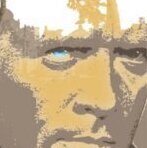
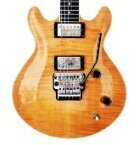
.thumb.jpg.2f0f241a63381e5644f287abacd76760.jpg)

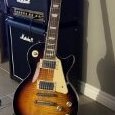
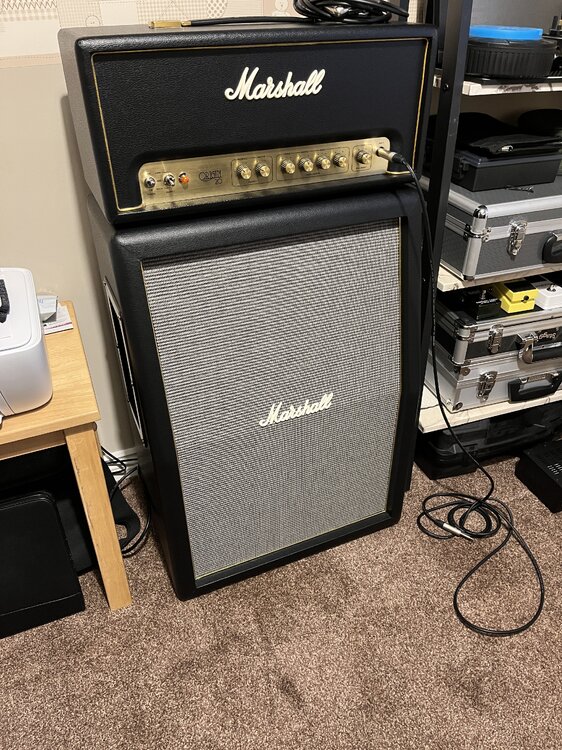
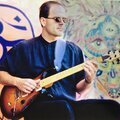
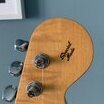
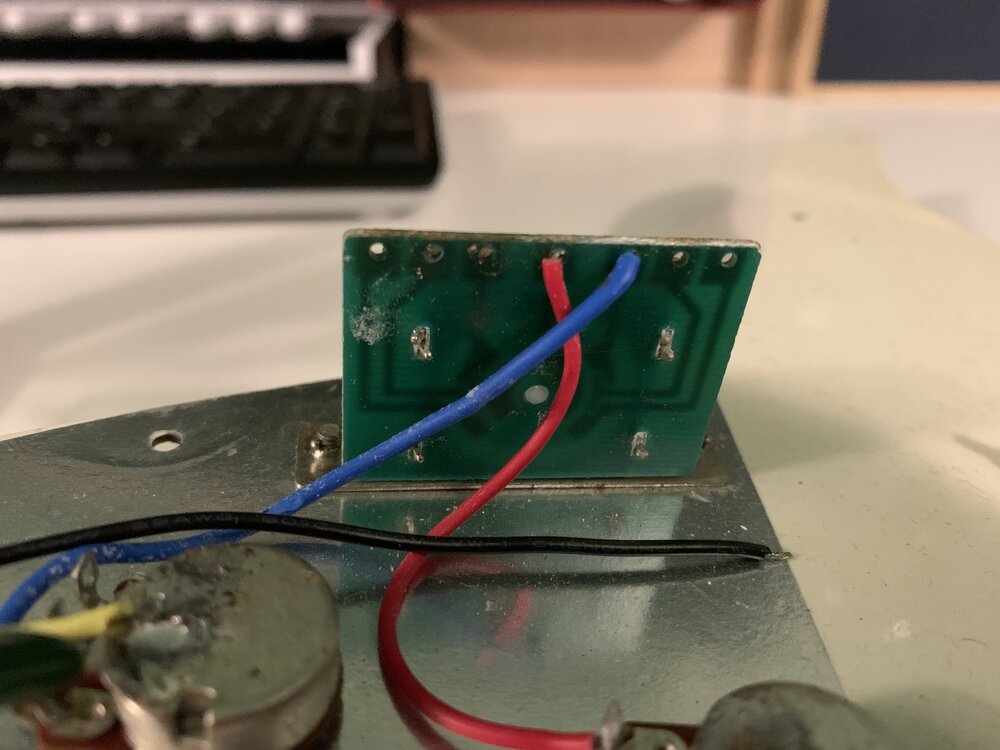
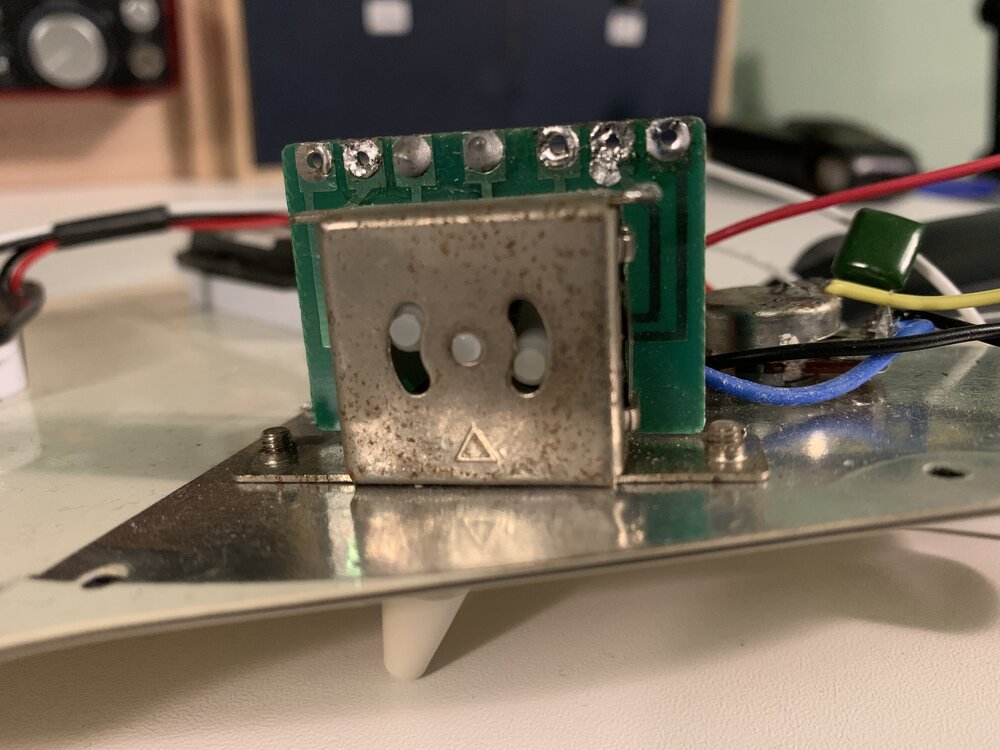

.thumb.jpg.bf04d549e8b000fc7f386743da4de4a9.jpg)
